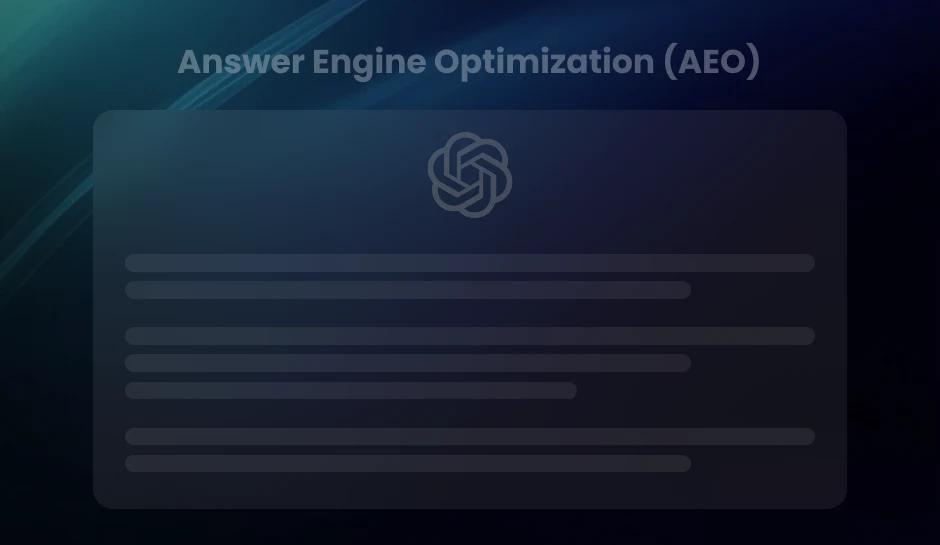
A Deep Dive into Time Decay Attribution Example
Understanding which marketing interactions drive conversions is crucial for success. In this deep dive into Time Decay Attribution, we explore how this model assigns weighted credit to touchpoints closer to conversion, optimizing your marketing efforts for better ROI.
Defining Time Decay Attribution
Time Decay Attribution is an advanced marketing attribution model that assigns more credit to touchpoints closer to the final conversion. This method acknowledges the importance of every interaction but emphasizes the ones that happen just before a customer makes a decision, making it a nuanced and practical approach to understanding customer behavior.
Unlike models that give equal credit across all touchpoints or prioritize the first or last interaction exclusively, Time Decay Attribution recognizes that marketing efforts closer to conversion often play a more significant role in driving the action. By weighting interactions based on their temporal proximity to the conversion, this model provides a more balanced and realistic view of the customer journey.
Time Decay vs. Other Models of Attribution
Time Decay Attribution stands out when compared to other attribution models such as:
- First-Touch Attribution:
- Last-Touch Attribution:
- Linear Attribution:
- Multi-Touch Attribution:
This model gives full credit to the first interaction a customer has with your brand, making it useful for identifying initial awareness campaigns but overlooking mid-to-late funnel contributions.
Here, 100% of the credit goes to the final interaction before conversion. While it has its merits, it disregards the importance of earlier touchpoints that helped nurture the lead.
This model splits credit equally across all touchpoints in the journey. While this promotes fairness, it may oversimplify the buying process by not acknowledging the varying impact of specific touchpoints.
Multi-Touch models assign credit based on predefined rules or algorithms, providing a more holistic view of the customer journey. Time Decay Attribution can be seen as a specific type of Multi-Touch model that is geared toward temporal importance.
Time Decay Attribution offers a unique middle ground by embracing the multi-touch philosophy while factoring in the recency of each touchpoint. This balance makes it particularly effective for marketers looking to refine their conversion strategies.
Why Time Decay Might Be the Most Realistic Approach to Conversion Credit Allocation
Marketing campaigns are rarely a matter of “one big push”. Instead, success typically stems from continuous efforts across multiple channels and touchpoints. Time Decay Attribution examples capture this dynamic by acknowledging the cumulative impact of earlier interactions while giving appropriate weight to efforts closer to the conversion.
Here’s why it might be the most realistic model:
- Reflects Customer Behavior:
- Supports Data-Driven Decision Making:
- Avoids Attribution Bias:
- Adapts to Complex Customer Journeys:
Buyers often need multiple interactions before committing to a purchase. Giving more credit to recent touchpoints mirrors the natural progression of decision-making.
This model provides actionable insights that help marketers optimize campaigns, such as reallocating budgets to channels or campaigns that drive late-stage interactions.
Unlike First-Touch or Last-Touch models, Time Decay Attribution avoids polarizing biases by spreading credit proportionately based on impact and timing.
Modern buyer journeys are highly non-linear. Time Decay Attribution adapts to this complexity, making it a robust option for today’s marketing landscape.
Ultimately, Time Decay Attribution provides marketers with an attribution model that more closely reflects the nuanced reality of buyer behavior. It’s a powerful tool for better understanding what works and when during the entire customer journey.
Examining the Customer Journey with Time Decay Attribution Example
Mapping a Typical Customer Journey in the Digital Age
The customer journey in today’s digital-first world is more complex than ever before. Gone are the days of straightforward, linear paths to purchase. Instead, modern consumers engage with multiple touchpoints-search engines, social media platforms, email campaigns, and even offline channels before making a buying decision.
This journey often starts with awareness, where a consumer discovers a brand, followed by consideration, where they research and compare options. Finally, they proceed to the decision stage, where they convert into paying customers. Understanding this intricate process is critical for marketers aiming to allocate credit to the right touchpoints using attribution models such as time decay.
The Value of Understanding the Customer’s Path to Purchase
Why should marketers pay close attention to the customer journey? Because every interaction between a consumer and your brand tells a part of the story. Analyzing the path to purchase allows businesses to identify which touchpoints are most impactful and where potential gaps might exist.
- Maximizing ROI:
- Personalization Opportunities:
- Customer Retention:
By understanding the journey, marketers can allocate budgets more efficiently to high-performing channels.
Mapping the journey reveals key insights into customer preferences, enabling tailored messaging.
A clear understanding of how your audience moves through the funnel ensures that you can nurture long-term relationships.
The Role of Various Channels Across the Journey
Every channel serves a unique purpose within the customer journey, and failing to account for this diversity can skew your attribution results. Here’s how channels typically contribute:
- Search Engines:
- Social Media:
- Email Campaigns:
- Paid Advertising:
- Offline Channels:
These often serve as the starting point for discovery and information-gathering.
Platforms like Facebook, Instagram, and LinkedIn are key during the awareness and engagement stages, helping to build connections with potential customers.
These nurture existing leads by providing personalized content and offers throughout the consideration phase.
Paid ads offer timely reminders and drive action at critical moments in the funnel.
In-store experiences, events, and traditional marketing efforts can also significantly influence purchase decisions.
Recognizing the unique contributions of these channels allows marketers to leverage models like time decay attribution more effectively, ensuring that each touchpoint receives the credit it deserves.
Pro Tip- Use UTM parameters and cross-channel tracking to accurately attribute conversions, ensuring every touchpoint—online or offline—gets the credit it deserves in your Time Decay Attribution model.
Dissecting Channel Performance
Understanding how each marketing channel contributes to your sales funnel is a cornerstone of building an effective marketing strategy. With multiple touchpoints along the customer journey, evaluating channel performance becomes essential to optimizing your efforts and ensuring your resources are allocated wisely.
Let’s break down why this analysis matters and how Time Decay Attribution plays a pivotal role in performance evaluation.
Analyzing How Different Marketing Channels Contribute to Sales
Every marketing channel-from social media ads to email newsletters-plays a unique role in guiding prospects toward conversion. Some channels may excel at generating initial interest, while others are more effective at closing the deal. A thorough analysis helps you determine which channels generate leads, which build engagement, and which drive conversions.
- Top-of-Funnel Channels:
- Mid-Funnel Channels:
- Bottom-of-Funnel Channels:
These channels, such as social media or content marketing, often focus on raising brand awareness and increasing visibility.
Channels like email campaigns and webinar events help nurture relationships and educate potential buyers.
Tactics such as retargeting ads or direct outreach often have a stronger influence on conversions and purchases.
By analyzing these channels individually and collectively, marketers can better understand where their strategy thrives and where it may need refinement.
Why Channel Performance Measurement is Essential for an Effective Marketing Strategy
Measuring channel performance allows for smarter decision-making and budget allocation. Without granular performance data, it becomes impossible to identify underperforming channels or capitalize on high-performing ones. Ignoring channel analysis can result in a wasted budget on campaigns that do not provide value while missing opportunities to double down on channels driving significant ROI.
Additionally, understanding channel performance fosters a more cohesive marketing strategy. When every channel is working toward the same overarching goal, your campaigns are more targeted, efficient, and impactful.
Incorporating Time Decay Attribution into Channel Performance Evaluation
One of the key tools for precisely evaluating channel performance is Time Decay Attribution. Unlike other models, Time Decay assigns more credit to touchpoints closer to the moment of conversion. This approach inherently acknowledges the increasing importance of interactions as a prospect moves toward making their final decision.
- Highlighting High-Value Channels:
- Providing a Balanced Perspective:
- Optimizing Marketing Spend:
Time Decay Attribution allows marketers to identify which channels play a critical role in conversions by analyzing the weight of their contributions over time.
While it emphasizes recent touchpoints, Time Decay doesn’t completely overshadow earlier interactions. This ensures both initial and closing channels are fairly represented.
By focusing on channels that actively assist in conversion, Time Decay Attribution helps optimize your marketing budget for maximum effectiveness.
Pro Tip- Use multi-touch attribution reports alongside Time Decay insights to uncover hidden high-impact channels and fine-tune your budget for maximum ROI.
Time Decay Attribution in Action: From Marketing to Sales
Impact of Time Decay Attribution on Marketing Campaigns
Time Decay Attribution enhances precision when analyzing marketing performance by giving greater weight to recent touchpoints. For example, if a potential customer first comes across a brand through a social media ad, attends a webinar weeks later, and finally converts after clicking a follow-up email, the model prioritizes the latter interactions. This weighted approach ensures marketers can identify which touchpoints are most effective in driving conversions as timelines shorten.
Implementing this model frequently results in better allocation of marketing budgets. Channels like retargeting ads and email campaigns, which cater to nurturing leads closer to conversion, often receive increased investment. This rebalancing leads to targeted campaigns with higher conversion rates while reducing spend on top-of-funnel efforts that fail to progress leads effectively.
Adjusting Sales Strategies Based on Time Decay Insights
Insights derived from Time Decay Attribution examples extend well beyond the realm of marketing; they directly influence sales strategy. With a clear understanding of high-impact touchpoints close to conversion, sales teams can focus their efforts on customers who exhibit similar engagement patterns.
For instance, if data shows that customers often convert after engaging with product comparison pages, sales teams might proactively share these resources as part of their pitch.
This alignment between marketing and sales creates a seamless handoff. Sales representatives can prioritize leads based on their proximity to conversion signals, a technique that shortens sales cycles and boosts closing rates. Moreover, knowing which interactions are pivotal enables the creation of playbooks that replicate the success of these touchpoints across multiple accounts.
The Buffeting Effect of Time Decay on Business Decisions
Time Decay Attribution is not confined to operational changes within marketing and sales that influence broader business decisions. By identifying which marketing channels and sales approaches generate the most value, companies can make informed strategic choices.
For example, if the model highlights that a specific channel consistently supports the last two touchpoints before purchase, businesses could justify expanding investment in that channel despite comparatively lower engagement earlier in the funnel.
Moreover, the ability to attribute conversions accurately fosters cross-departmental alignment. Marketing, sales, and product teams can collaboratively analyze which touchpoints resonate most with customers. This approach not only optimizes individual functions but also strengthens the company’s overarching strategy for customer retention and acquisition.
Pro Tip- Align marketing and sales teams by integrating Time Decay Attribution insights into lead scoring models, ensuring high-intent prospects receive timely and personalized follow-ups.
Enhancing Data-Driven Decision-Making with Time Decay Attribution
How Time Decay Attribution Contributes to Data-Driven Decision Making
Organizations using time decay attribution examples can unlock profound insights into the customer journey by assigning heavier credit to the touchpoints nearest to conversion. This method removes the ambiguity in attributing revenue across the funnel. Analyzing these weighted interactions allows marketers to see which campaigns or channels drive incremental performance.
By narrowing the focus to the final stretches of conversion, decision-makers gain precision in evaluating tactical execution. For instance, this model can reveal the turning point that nudged a prospect toward purchase, enabling more targeted budget allocation. Incorporating these learnings into strategies ensures marketing optimization informed by granular, actionable data.
The Role of Analytics in Refining Time Decay Models
No attribution model operates effectively without robust analytics to continually refine its precision. Time decay attribution thrives on iterative improvements grounded in data analysis. Advanced tools, such as Google Analytics 4 or Adobe Analytics, provide comprehensive tracking capabilities to reinforce model accuracy. These platforms allow marketing teams to experiment with varying time decay half-life parameters to reflect unique sales cycles.
Customizing the decay curve ensures no misrepresentation of touchpoints. For instance, a B2B company could define different time decay windows for free-trial signups versus enterprise-level sales. Cross-referencing these findings with CRM data bridges gaps between marketing and actual revenue generation. Analytics, complemented by cross-department collaboration, guarantees alignment between operational metrics and observable business outcomes.
Ultimately, time decay attribution stands as a decision-making cornerstone when complemented by meticulous data analysis and iterative refinement.
Pro Tip- Regularly test and adjust the decay curve based on sales cycle length and customer behavior to ensure the model accurately reflects real-world conversion patterns.
Measuring Advertising Campaign Effectiveness with Time Decay Attribution
Effectively gauging the performance of advertising campaigns is a cornerstone of modern marketing strategy. Among the array of attribution models available, time decay attribution stands out as a critical tool for understanding how different touchpoints contribute to overall campaign success. By recognizing the diminishing impact of older interactions while prioritizing recent ones, this model provides a pragmatic lens through which to measure campaign ROI and optimize performance.
The Role of Time Decay in Assessing Advertising Campaign Effectiveness
Time decay attribution assigns more credit to interactions closer to the point of conversion, creating a weighted framework that mirrors real user behavior. This makes it particularly valuable for assessing advertising campaigns, as it:
- Highlights the importance of timely touchpoints:
- Balances channel contributions:
- Offers actionable data insights:
Time decay ensures that recently engaged ads, which are more likely to influence decision-making, are given appropriate credit.
Unlike last-click models, it doesn’t completely dismiss earlier interactions but emphasizes relevance over time.
Marketers can pinpoint which ads and channels are driving conversions at critical stages in the customer journey.
For advertisers, this model translates into a clearer understanding of campaign effectiveness, enabling them to allocate budgets strategically and focus on high-performing channels.
How to Incorporate Time Decay Attribution Example into Incrementality Testing
Incrementality testing determines the true lift of your advertising efforts by measuring what would have happened in the absence of specific campaigns or channels. Time decay attribution can enhance these tests by providing granular insight into the interactions that drive incremental value. Here’s how:
- Define your control and test groups:
- Track the timeline of interactions:
- Refine campaign optimizations:
Time decay attribution helps identify which touchpoints should be included in the analysis, ensuring accurate group segmentation.
With time decay, you can analyze the sequential impact of each ad impression, email, or click, ensuring every interaction contributes to your broader incrementality assessment.
Results from incrementality tests, combined with time decay data, allow for smarter reallocation of advertising resources to high-impact activities.
By integrating time decay attribution into incrementality testing, marketers achieve a more nuanced understanding of their campaigns’ impact, leading to informed strategies and better long-term outcomes.
Pro Tip- Combine time decay attribution with incrementality testing to distinguish between genuinely influential touchpoints and those that would have occurred organically, ensuring smarter ad spend allocation.
Conclusion: Harnessing the Power of Time Decay Attribution
Time Decay Attribution offers a bold advantage in today’s fast-paced marketing environment. By assigning incremental credit to touchpoints closer to the conversion event, it provides a fairer, more nuanced view of the customer journey. This data-driven approach enables businesses to identify the most impactful channels and optimize their strategies for improved ROI and higher conversion rates.
The benefits of deploying Time Decay Attribution are evident:
- Enhanced strategy optimization:
- Better insights:
- Informed decision-making:
It ensures marketing budgets are allocated to high-performing touchpoints.
Brands gain a deeper understanding of customer behavior by analyzing the significance of touchpoints closer to conversion.
This model empowers marketers to make smarter, evidence-based decisions to drive growth.
While Time Decay Attribution brings clarity to marketing efforts, it’s important to remember that no single model fits every scenario. Businesses should consider experimenting with this model and others, such as first-touch, last-touch, or linear attribution, to determine the best approach for their goals and campaigns. Combining attribution insights with your unique business context will ensure your strategies are impactful and tailored to your audience.
Key Takeaways
- Time Decay Attribution assigns more credit to interactions closer to conversion, ensuring a realistic representation of their impact on decision-making.
- By identifying high-value touchpoints, businesses can allocate budgets more effectively, improving ROI and campaign efficiency.
- This model provides actionable insights that refine marketing strategies, reduce guesswork, and align efforts with customer behavior.
- Unlike First-Touch or Last-Touch models, Time Decay Attribution distributes credit proportionately, offering a fairer and more holistic view of the customer journey.
Want to learn more about time decay attribution through decay attribution example?
Just write to us at info@diggrowth.com and we’ll get back to you.
Ready to get started?
Increase your marketing ROI by 30% with custom dashboards & reports that present a clear picture of marketing effectiveness
Start Free Trial
Experience Premium Marketing Analytics At Budget-Friendly Pricing.

Learn how you can accurately measure return on marketing investment.
Additional Resources
Don’t Let AI Break Your Brand: What Every CMO Should Know
AI isn’t just another marketing tool. It’s changing...
Read full post postFrom Demos to Deployment: Why MCP Is the Foundation of Agentic AI
A quiet revolution is unfolding in AI. And...
Read full post postAnswer Engine Optimization (AEO): The New Frontier of SEO in 2025
As digital experiences continue to evolve, so does...
Read full post postFAQ's
Suppose a customer interacts with a brand through a social media ad, an email, and a retargeting ad before making a purchase. Time Decay Attribution gives more credit to the retargeting ad and email since they occurred closer to conversion.
It helps marketers analyze which touchpoints drive conversions by assigning a higher weight to recent interactions, enabling better budget allocation for high-impact channels.
Yes, it works for both. In B2B, it highlights key touchpoints in long sales cycles, while in B2C, it optimizes digital ad spending by prioritizing recent engagement.
Platforms like Google Analytics 4, Adobe Analytics, and marketing automation tools offer Time Decay Attribution models to measure and optimize campaign effectiveness.
It may undervalue early-funnel efforts like brand awareness and organic discovery, making it essential to use in combination with other attribution models for a full picture.
 Rahul Sachdeva
Rahul Sachdeva 

